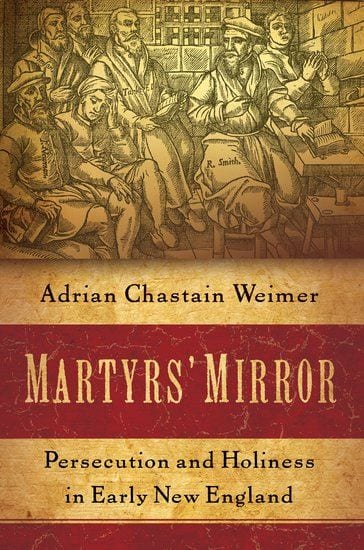Martyrs’ Mirror: Persecution and Holiness in Early New England by Adrian Chastain Weimer
 Oxford University Press | 2011
Oxford University Press | 2011
This book examines the folklore of martyrdom in seventeenth-century Protestant culture, exploring how Congregationalists, Separatists, Antinomians, Baptists, and Quakers imagined themselves within biblical and historical narratives of persecution. Memories of martyrdom, especially John Foxe’s stories of the Protestants killed during the reign of Queen Mary in the mid-sixteenth century, were central to a model of holiness and political legitimacy. This examination of the notions of persecution and martyrdom as they move in and out of the sermons, letters, diaries, and poetry of the period reveals that the idea of the true church as a persecuted church infused colonial identity and articulations of difference. Congregationalists saw outsider groups as persecuting agents of Antichrist, and Antinomians, Quakers, and Baptists drew courage and models from historic martyrs as they resisted Congregationalist authority. Though contested, the martyrs formed a shared heritage, and fear of being labeled a persecutor, or even admiration for a cheerful sufferer, could serve to inspire religious tolerance. The sense of being uniquely marginalized also allowed colonists to avoid responsibility for aggression against Algonquian tribes. Surprisingly, those wishing to defend maltreated Christian Native Americans wrote their history as a continuation of the persecutions of the true church. This analysis of the historical imagination of martyrdom contributes to our understanding of the meaning of suffering and holiness in English Protestant culture, of the significance of religious models to debates over political legitimacy, and of the cultural history of persecution and religious liberty.





